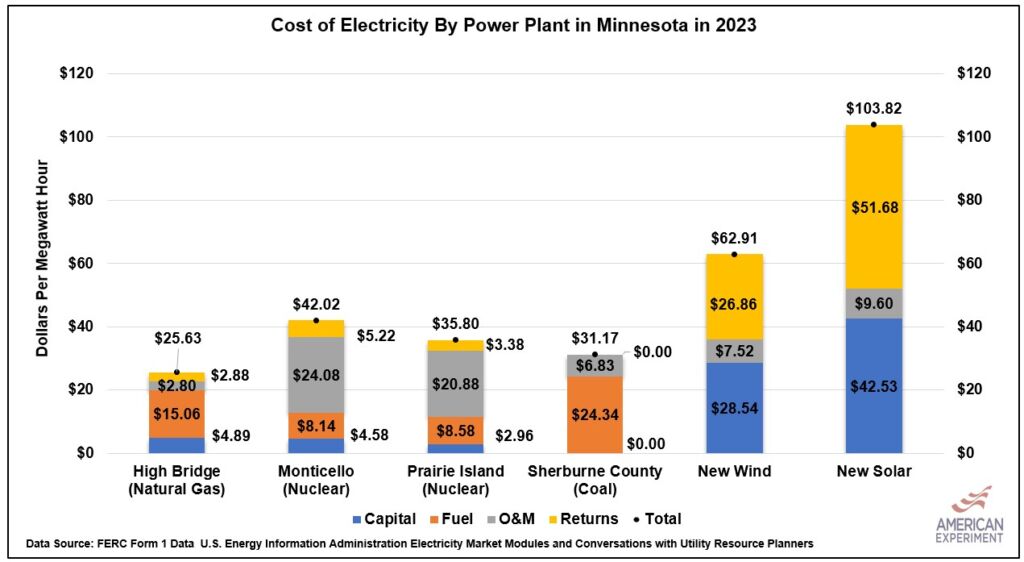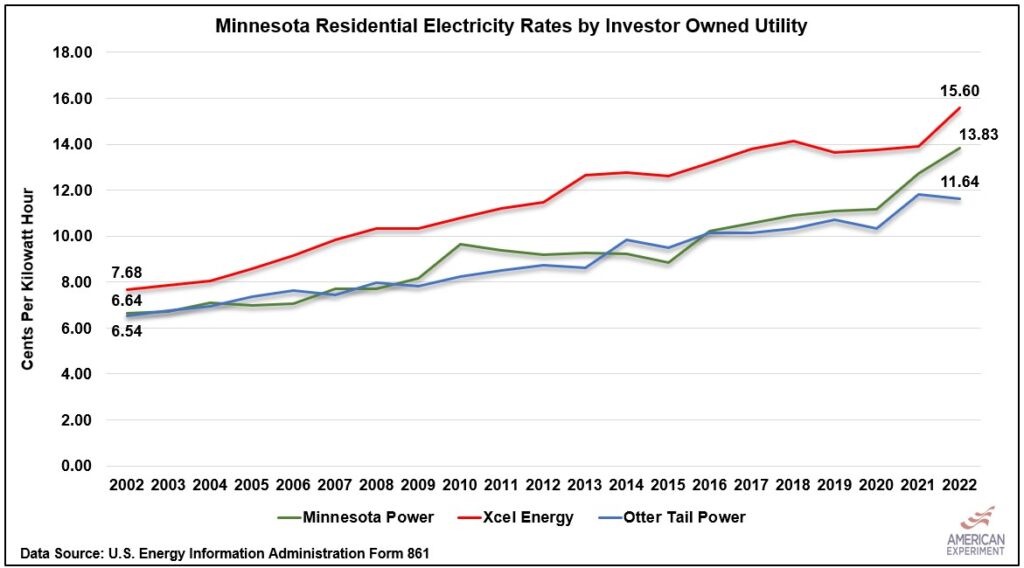Xcel Energy seeks major wind installation in Southwestern Minnesota as wind energy prices rise
Last week, Xcel Energy announced it is seeking to install 1,200 megawatts (MW) of new wind capacity in southwest Minnesota by 2027, which would constitute a 25 percent increase in the amount of wind capacity installed in Minnesota relative to 2021, according to data from the U.S. Energy Information Administration (EIA).
The problem? Wind prices are rising after bottoming out in 2019, with the unsubsidized cost of wind increasing to about $63 per megawatt-hour (MWh) as of 2023, reversing nearly a decade of cost declines from 2013 through 2019.

The graph below shows the cost of new wind and solar facilities compared to existing power plants in Minnesota. Rising costs for wind turbines and solar panels mean these electricity-generating technologies cost two to three times more than the Sherburne County coal plant Xcel claims the wind is helping to replace.

Replacing the low-cost, reliable electricity generated at Sherco with higher-cost, less-reliable electricity is going to result in rising electricity prices for Minnesota families and businesses, even though renewable boosters who lie to the public by saying that new wind and solar resources are lower cost than operating existing coal facilities.
It is no surprise that Xcel Energy, which was the first utility in the nation to announce that it would provide 100 percent carbon-free electricity by 2050, has the highest electricity prices in the state. We can expect these prices to rise substantially as Xcel foolishly shuts down its coal plants before their useful lifetime and attempts to replace them with extensive and unreliable wind and solar generators.

Minnesota is making the worst possible decisions when it comes to energy, and we are going to suffer grave consequences for doing so. The reliability of the electric grid is becoming increasingly tenuous, and prices keep rising because we are enacting California-style energy policies while expecting different results.
Instead of building new wind, solar, and transmission lines, Xcel Energy should be using its teams of lobbyists to educate lawmakers about the need for new nuclear power plants in the state to eventually replace the existing coal plants when they have reached the end of their useful lives. Unfortunately, Xcel would rather print money with a guaranteed rate of return than do what’s right for ratepayers.